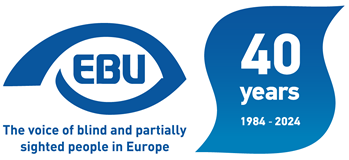A. LEGISLATION
1. What legislative measures are being taken in your country to facilitate the mobility of people with disabilities in general? (Accessibility of roads, transport, buildings) when should they apply?
The Ministry of Environment and Physical Planning published the Act on ensuring accessibility to buildings for persons with disabilities and reduced mobility.
2. Are there specific measures for the visually impaired? If so, describe them briefly.
Within the aforementioned Act, accessibility for persons with visual impairments is regulated through obligation of installing tactile guide paths; tactile map layouts; speech programs in elevators, means of public transportation (tram, bus) and in traffic lights; use of contrast colours in important public spaces.
3. How are these measures implemented? Are visually impaired Associations associated with their application? If so, how?
Croatian Association of the Blind acts as advisor in the selection of optimal solutions for the measures ensuring accessibility.
4. Have they already produced tangible results?
Yes, speech announcement of stations in urban transportation (trams, buses, traffic lights).
5. What are the penalties for non-application of the above measures?
There are no penalties for non-application of measures. However, when working on building projects, elements of accessibility must be ensured, otherwise the building will not get an occupancy permit.
B. TRAVEL AID
6. What are the main technical aids used by visually impaired people in your country for mobility: long cane, optical aids, electronic aids, GPS?
Long white cane, optical and electronic aids and rarely GPS.
6.1. How are they distributed?
They are distributed through the Croatian Association of the Blind and companies specializing in technical aids for persons with disabilities.
6.2. Is training provided during their acquisition?
Yes, in cases when the person is in rehabilitation process.
6.3. How are they funded in the acquisition?
They are founded through Croatian Health Insurance Fund.
6.4. How are guaranteed and financed repairs, maintenance?
Yes, also through Croatian Health Insurance Fund.
6.5. Is the white cane recognized as a symbol of visual impairment? If yes, specify the conditions related to its attribution, sanctions in cases of abuse, specific provisions regarding its use.
Yes white cane is recognized as a symbol of visual impairment. A condition related to its attribution is proof of visual impairment that is classified as blindness by the standards of WHO. There are no sanctions in cases of abuse.
7. Is research conducted in your country to develop new assistive devices? If yes, please specify. How are visually impaired people associated with this research?
Yes, research and developments are done through various projects where associations of PWDs are in the role of partners.
C. LOCOMOTION TRAINING
8. How are visually impaired people in your country trained in mobility? (Specify training in the regular school or specialized in functional rehabilitation for people who lose their sight as adults, in the context of structures for the elderly.)
Visually impaired people who lost their sight later in life are trained in the Department for rehabilitation of persons who lost their sight later in life, within the Centre for the blind Vinko Bek, Zagreb and through various projects implemented by CAB member associations.
9. What is the training undertaken by mobility instructors? Is it recognized by an official certificate? If yes, specify briefly the content of the training. Is there any on-the-job training for mobility instructors?
There is no systematic approach to training mobility instructors and no certified programme.
D. AUTONOMY IN DAILY LIFE
10. Help with daily life: how are the visually impaired in your country trained to be autonomous in daily life?
Within the projects of the CAB member associations and in the Department for rehabilitation of persons who lost their sight later in life, Center for the blind Vinko Bek, Zagreb.
11. Is there specific support? If so by which professionals is it provided and in what context? What is the training of these professionals?
Specific support is provided in the mentioned Department; from professionals and experts in the field of special education teaching, psychology, social work etc.
12. Does your country have training for instructors in autonomy? Is there a certificate recognized by the State?
No, there is no training for instructors in autonomy.
E. PUBLIC INFORMATION AND PROFESSIONALS
13. Is the public informed of the mobility needs of visually impaired people? If yes, by whom and how.
Yes, the public is informed by the CAB core members associations, through various media channels (TV, radio, newspapers, internet) in the form of presentations and promotion of projects and through marking certain dates (for example White Cane Day, 15th October).
14. Do professionals who interact with visually impaired people have any specific training or awareness training concerning visual impairment?
Yes, professionals have the opportunity to receive specific training and awareness rising concerning visual impairment within various projects related to the theme.

